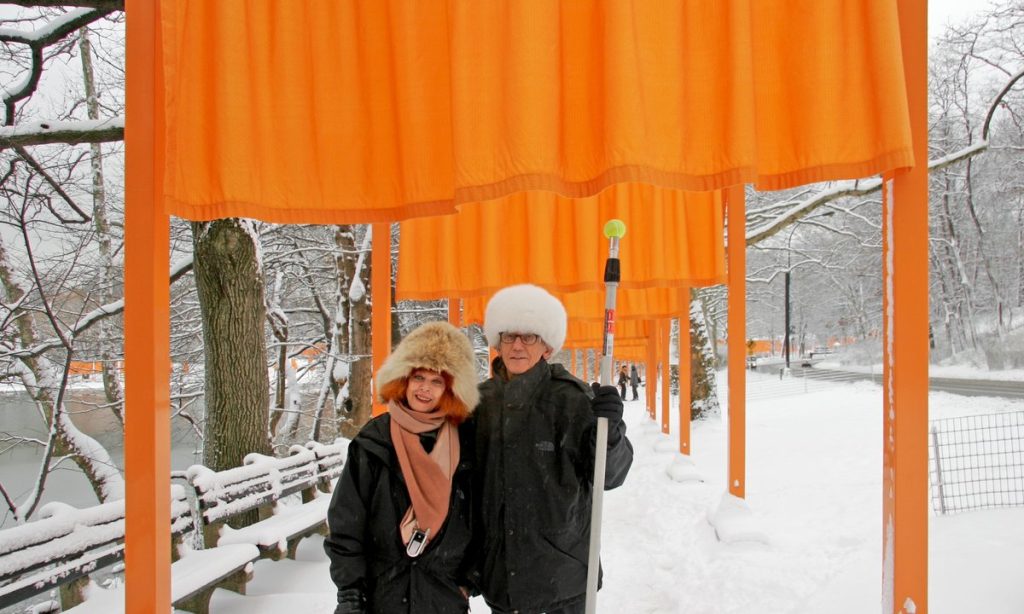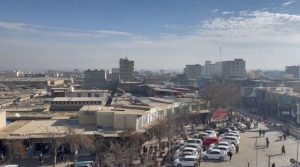For 16 days in February of 2005, a festival atmosphere took over New York’s Central Park, where Christo and Jeanne-Claude’s installation The Gates attracted an estimated four million visitors to see the array of 7,503 orange fabric panels suspended from metal gates along a 23-mile-long series of paths and walkways.
Not everyone loved it. New York Magazine art critic Mark Stevens referred to the installation, which was partly inspired by the Japanese torii gates traditionally found at Shinto shrines, as “a kind of visual one-liner that lacks any strong metaphysical character”. More visitors may have agreed with The New York Times critic Michael Kimmelman who, referencing the men who designed Central Park in the mid-19th century, called the work a “gracious homage to Olmsted’s and Vaux’s abiding pastoral vision”.
Twenty years have gone by since that installation was put up and taken down, and a commemoration of The Gates (12 February-23 March) is taking place at sites around Manhattan. Part of the celebration will take place at The Shed, where Christo and Jeanne-Claude: The Gates and Unrealized Projects for New York City includes drawings, models and components related to the 2005 installation. A scale model of Central Park will be on display, and through a specially designed iPad programme (developed by Pixels Pixels and Dirt Empire for The Shed exhibition) held over the map, viewers can get panoramic views of where the 7,503 gates were installed based on film of the site in 2005, as well as other information about the project.
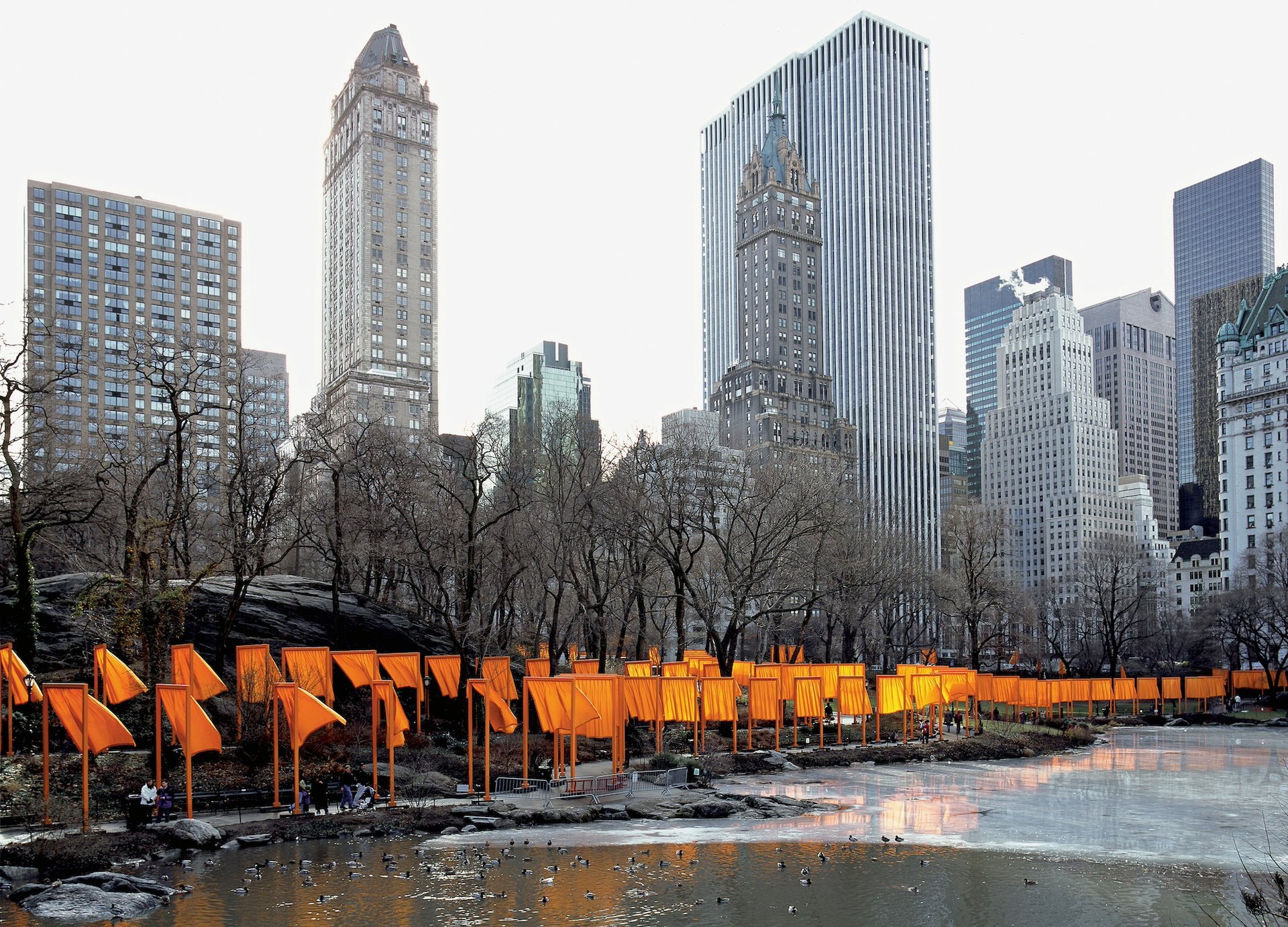
Christo and Jeanne-Claude, The Gates, Central Park, New York City, 1979-2005. New York City, 2005. Photo: Wolfgang Volz. © 2005 Christo and Jeanne-Claude Foundation
The “Unrealized Projects for New York City” portion of the exhibition will showcase a series of 13 other Christo and Jeanne-Claude proposals for New York City, designed between 1964 and 1969, and shown through scale models and videos. Though never realised, they reveal the duo’s ambitious and innovative spirit and their deep connections to the city they had called home since 1964 (Jeanne-Claude died in 2009, Christo in 2020).
Uptown in Central Park, visitors can relive the experience of walking under the fabric banners by way of an interactive augmented reality (AR) component in the Bloomberg Connects app, which may be downloaded for free. The technology, developed collaboratively by the Christo and Jeanne-Claude Foundation, Dirt Empire and Superbright, is accessible along marked paths from East 72nd Street and Fifth Avenue and Cherry Hill on the Central Park Conservancy’s guide on the Bloomberg Connects app. Within the seven sections along these pathways, users will be prompted to scan signage enabling the experience of several hundred gates via their mobile devices. Each location unlocks an additional story on the app through archival images and text, offering insight into The Gates and Christo and Jeanne-Claude’s legacy.
When the AR feature is activated, users will “view the park through their phone’s camera, with the digital The Gates added to the live view on the screen”, says Igal Nassima, founder of the New York-based Superbright Studios. “For example, if it’s raining, you’ll see the actual rain in the park, and the digital Gates will appear to react to it, too. On a windy day, the fabric on the Gates will seem to move with the wind. When it’s sunny, the fabric will appear bright and glowing, matching the sunlight’s direction based on where you are in the park. This makes the digital Gates feel more in tune with the real-world surroundings.”
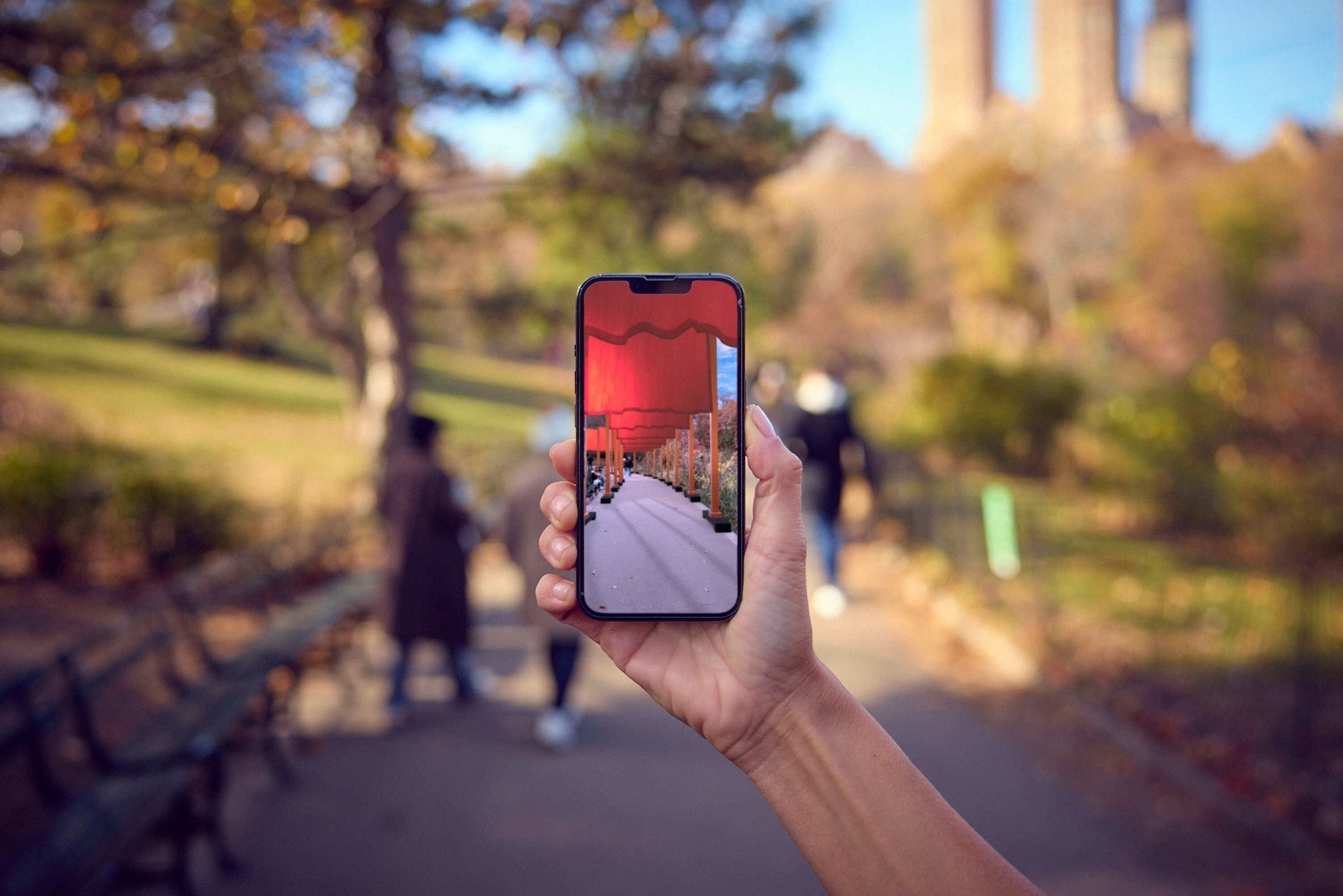
Early image of “The Gates: An Augmented Reality Experience” in Central Park, available through the Bloomberg Connects app © 2025 Joe Pugliese and Dirt Empire
This digital commemoration is the product of a collaboration between the Christo and Jeanne-Claude Foundation, The Shed, the Central Park Conservancy, the New York City Parks Department and Bloomberg Philanthropies. Patricia E. Harris, Bloomberg Philanthropies’ chief executive, says: “The Gates changed the landscape, literally, for everyone who experienced it and for public art in New York City. It was a labour of love for the artists and it took a great deal of close partnership to ensure its success. Now, 20 years later, we have an opportunity to use technology to connect audiences with the artwork and celebrate its collaborative spirit with a new generation.”
The aim of this multifaceted commemoration, according to Pascal Roulin, the exhibition’s curator, “is to tell the story of that event which happened for two weeks in 2005 and took 26 years in the making. Twenty years later, we are presenting the story to a new generation that was not in New York in 2005 and might have no idea that it had happened.”
History generally has looked back fondly on The Gates. Andrianna Campbell-Lafleur, an art critic and historian, said the installation has art historical importance, as it “epitomised a new port of entry into Central Park (thus New York City), noted for staid anthropomorphic monuments; it was spectacular in size and provided a break in the glass-steel constructed environment”.
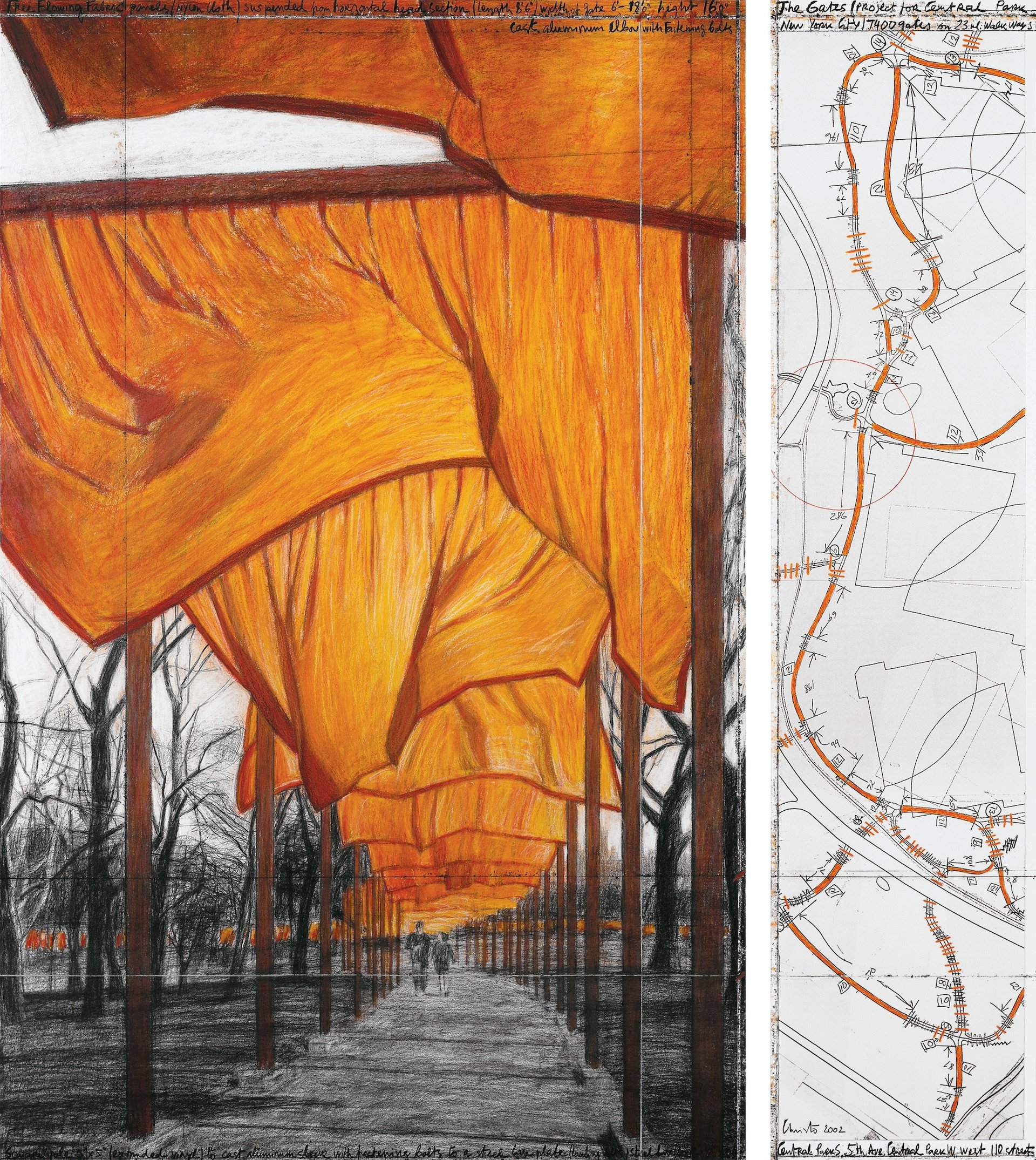
Christo, The Gates (Project for Central Park, New York City), 2002 Property of the Christo and Jeanne-Claude Foundation. Photo: André Grossmann. © 2002 Christo and Jeanne-Claude Foundation
Appealing to a city still in shock from theterrorist attacks of 11 September 2001, administration of New York mayor Michael Bloomberg saw The Gates as a way to lighten the mood, according to Vladimir Yavachev, director of operations for the Christo and Jeanne-Claude Foundation and Christo’s nephew. “People told me that it was the first time in years that people in New York looked up in joy,” he says. It also helped that the cost of installing the sprawling Land art piece—$16m—would be paid exclusively by the artists rather than all or in part by the city. That included all the hardware (5,390 tons of steel, 315,491 ft of vinyl tubing and 15,000 sets of brackets) and the 99,155 sq. m of fabric, with all the assembly completed by 600 workers hired and paid for by the artists.
“Christo and Jeanne-Claude never wanted to have their projects redone,” Yavachev adds. “You can see it again with your phones.”
- Christo and Jeanne-Claude: The Gates and Unrealized Projects for New York City, The Shed, New York, 12 February-23 March



